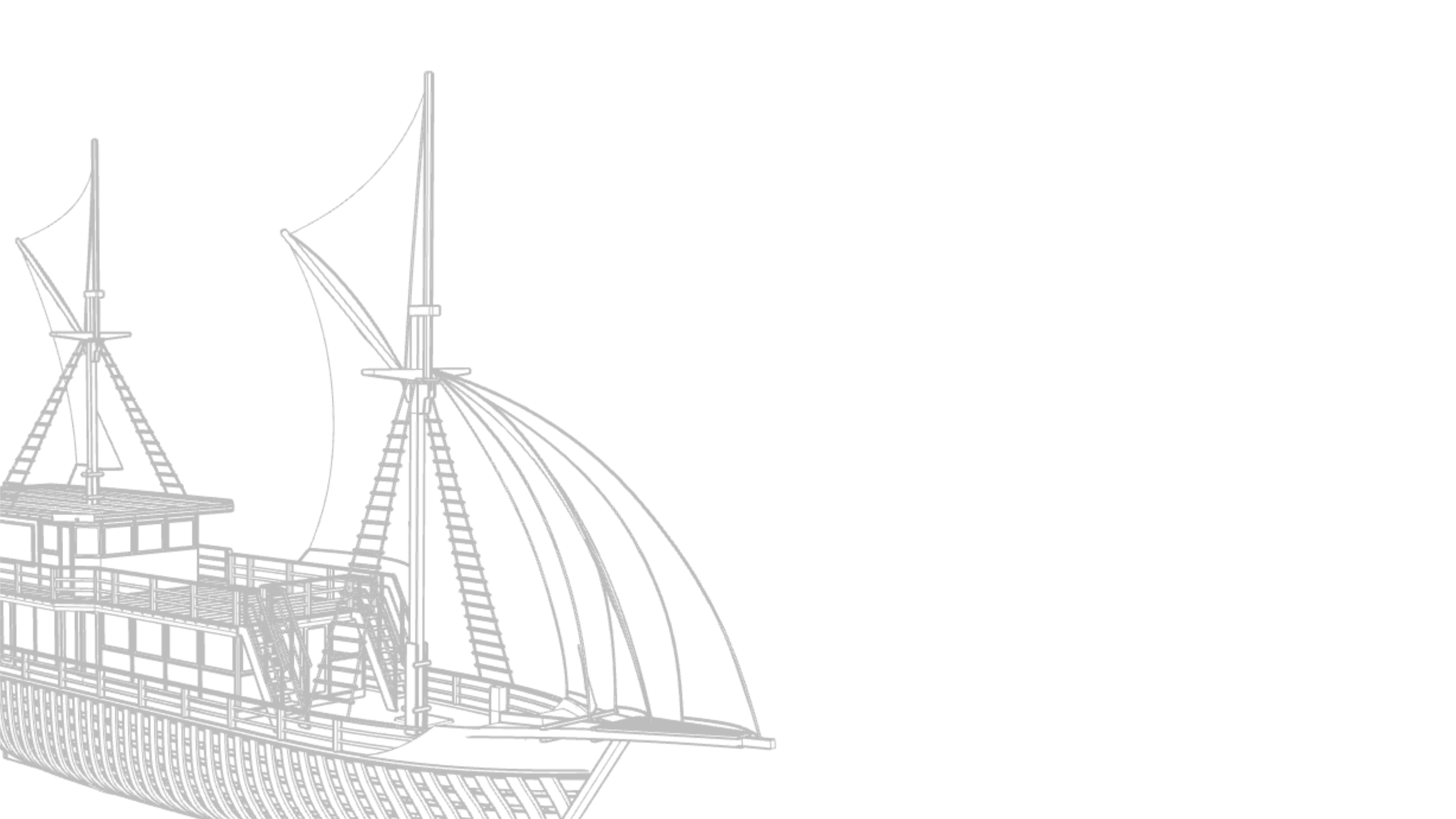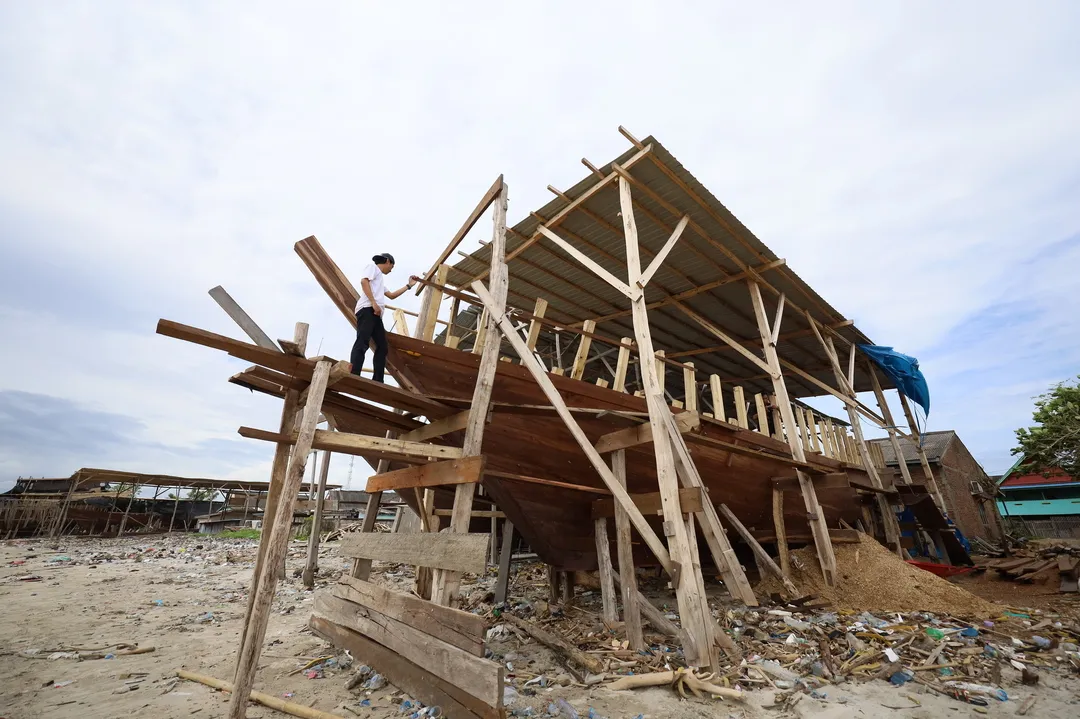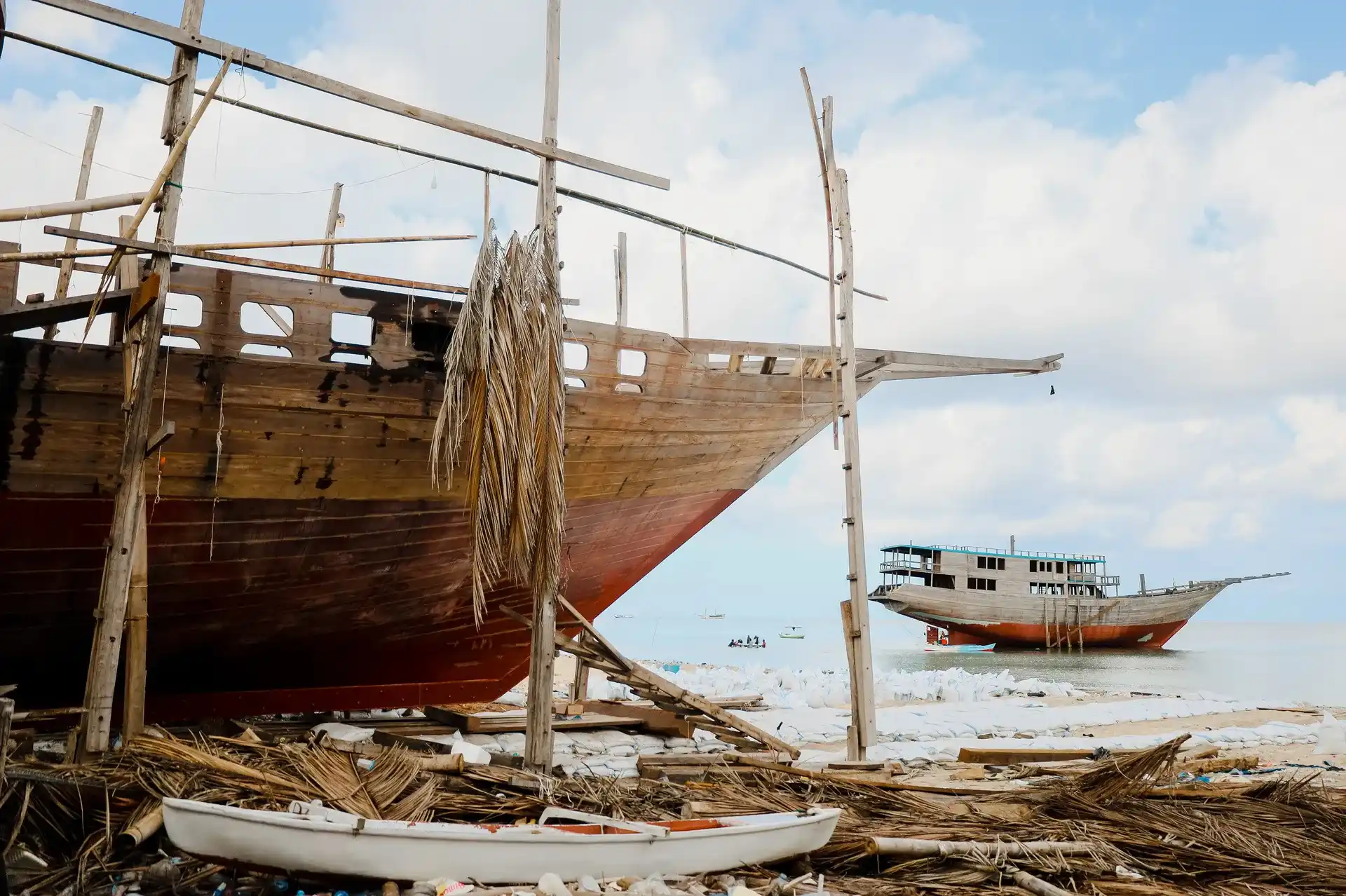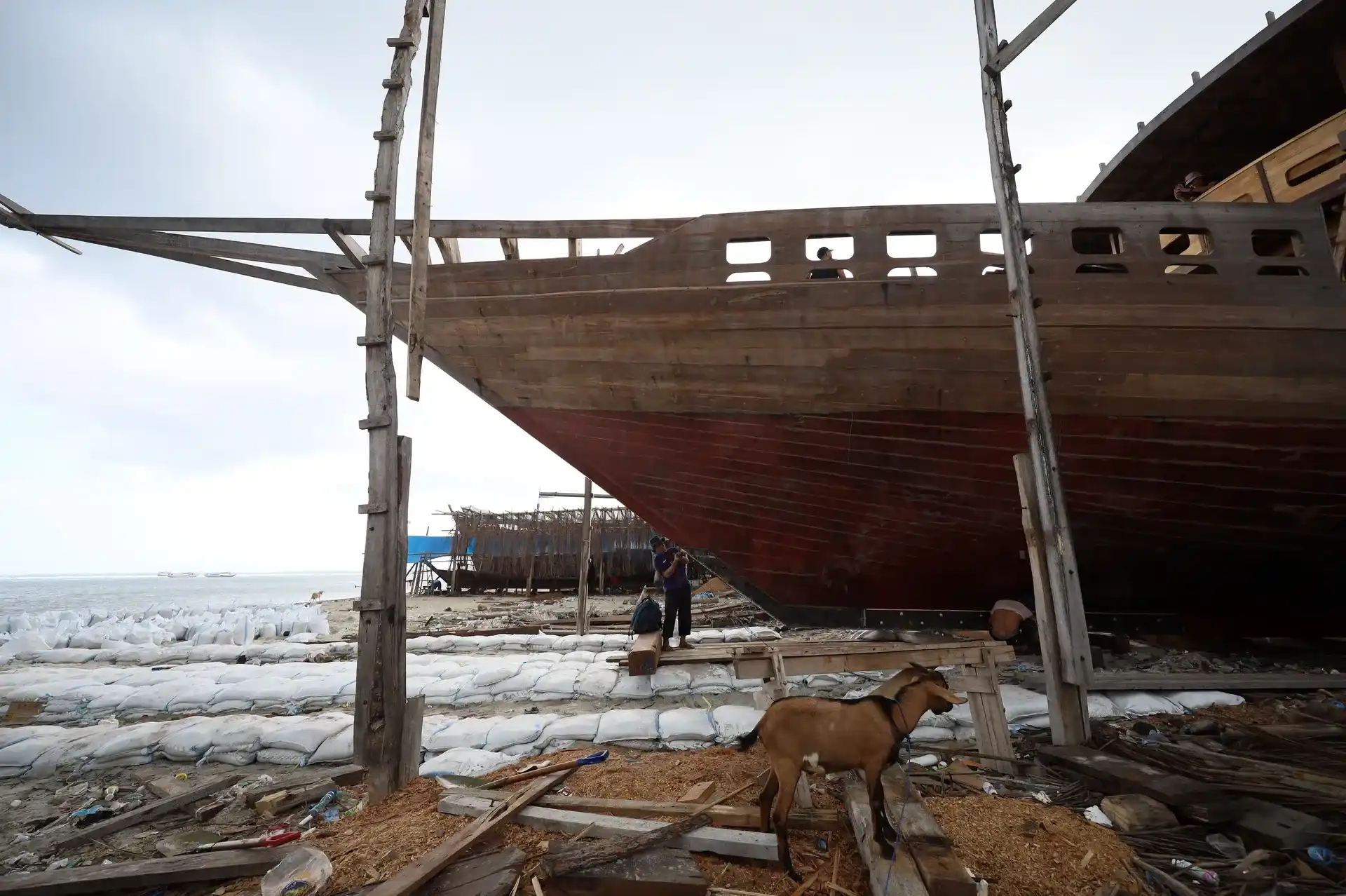Does the Phinisi Ship Use an Engine? Tradition Meets Modern Power
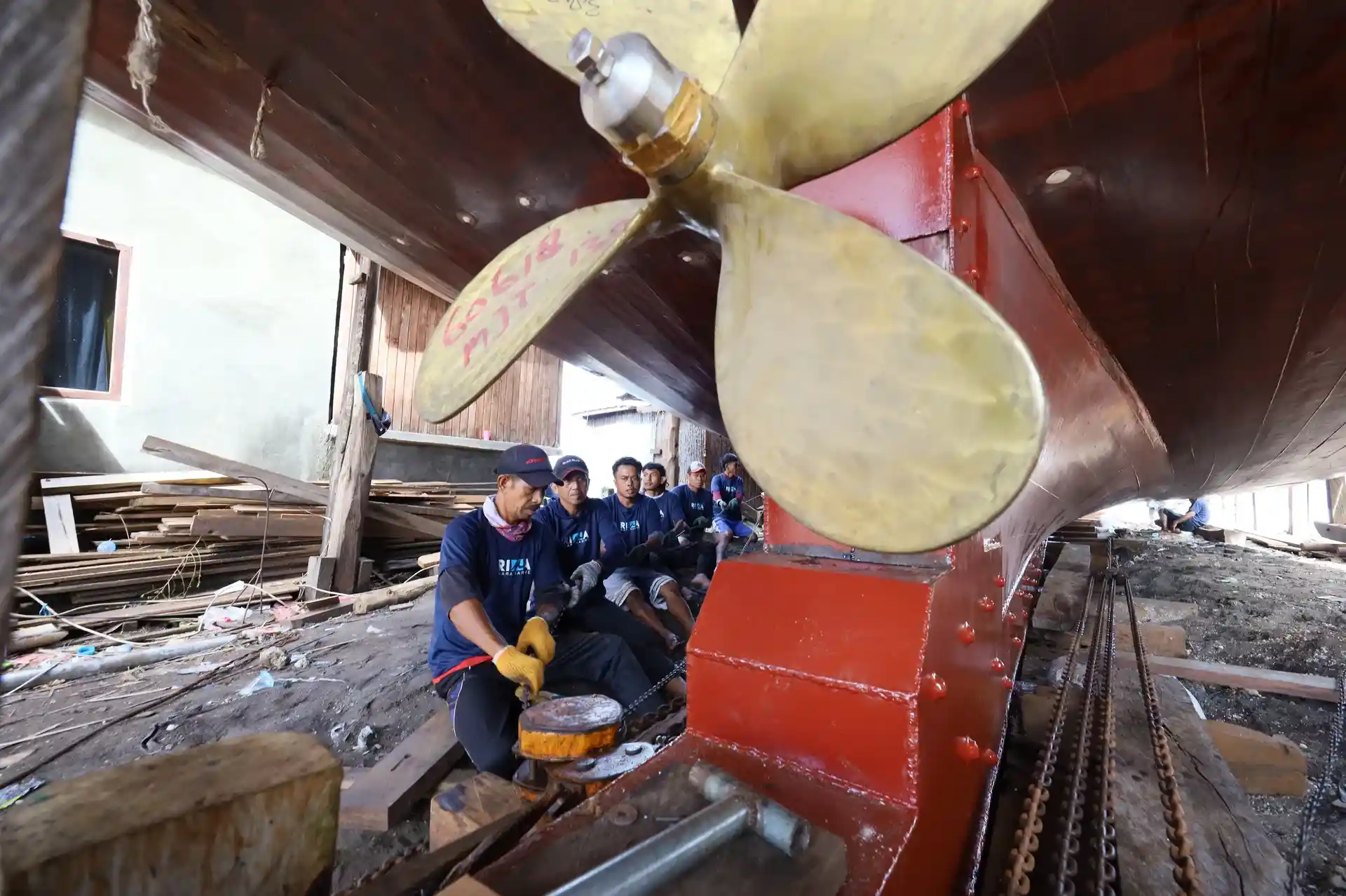
Does the Phinisi ship use an engine? The answer lies in how this iconic vessel bridges tradition and modernity. Once fully wind-powered, the Phinisi is now often fitted with engines to meet modern sailing needs. This evolution blends heritage with function.
Let’s explore how today’s Phinisi sails the seas.
Traditional Sailing: The Origin of Wind-Powered Phinisi
The earliest Phinisi ships were fully wind-powered vessels, expertly crafted for long-distance maritime trade by Bugis and Makassar seafarers. Built without engines, they relied entirely on traditional sailing techniques and natural forces.
- Two masts and seven sails were used to optimize wind direction and balance at sea.
- No engine installed—navigation depended on the crew’s knowledge of wind, stars, and currents.
- Used in the spice trade, they connected islands across the Indonesian archipelago and beyond.
- Crafted by hand using oral tradition and intuitive design, without modern tools or blueprints.
These wind-reliant Phinisi ships symbolize the height of Indonesia’s traditional seafaring legacy.
Read Also: How Phinisi Boats Are Made in Tana Beru: Craft, Culture & Ceremony
Do Phinisi Ships Today Use Engines?
Today’s Phinisi ships are a blend of tradition and technology—while they still honor the elegance of sail, most are now equipped with engines to meet modern demands.
- Yes, most Phinisi ships today use engines, especially those operating in tourism or commercial charters.
- Engines ensure reliable movement in calm seas or tight schedules, where wind alone may not suffice.
- Liveaboard vessels and charters often require engines for better control, safety, and time efficiency.
- Many use hybrid systems, combining sails for ambiance and tradition, and engines for practical navigation.
This fusion allows Phinisi vessels to stay true to their heritage while adapting to contemporary needs.
Why Add an Engine to a Phinisi?
Adding an engine to a Phinisi is not about abandoning tradition—it’s about adapting this heritage vessel to meet modern maritime needs, especially in tourism and commercial use. Here’s why engines are often included in contemporary builds:
1. Reliability
Sailing with wind alone depends on unpredictable weather conditions. Engines offer consistent power, ensuring the ship can keep moving even when the wind dies down, or when calm seas slow progress significantly.
2. Navigation
Maneuvering a large wooden vessel like the Phinisi can be challenging in tight ports, bays, or when docking. An engine provides the control and precision needed in such areas, helping avoid delays or accidents.
3. Charter Business
In the tourism sector, itineraries often run on tight schedules. Engines help operators stick to those timelines, ensuring guests visit all planned destinations without being overly dependent on sailing conditions.
4. Safety
Having an engine on board offers an essential backup during emergencies. Whether it’s avoiding a storm, assisting another vessel, or returning to port quickly, engines add an extra layer of security for passengers and crew alike.
Read Also: Exploring the Traditional Boats of the Bugis People: Craft, Culture, Legacy
Engine Types Commonly Used
Modern Phinisi ships are often fitted with engines to enhance functionality without compromising their traditional aesthetic. These engines are carefully selected and installed to suit the boat’s size and purpose. Commonly used types include:
- Marine diesel engines are the standard choice due to their durability, fuel efficiency, and suitability for long voyages.
- Horsepower varies by boat size—typically ranging from 200 to 400 HP, often using 6-cylinder configurations to power vessels 20 to 40 meters long.
- Discreetly installed within the hull, below deck, ensuring that the traditional look of the Phinisi remains intact while offering the benefits of modern power.
Does the Engine Compromise Tradition?
While the addition of an engine might seem like a break from tradition, in reality, it doesn’t compromise the cultural integrity of the Phinisi. Modern builders maintain the essence of the craft while embracing innovations that serve practical needs.
- Phinisi ships are still handcrafted using traditional wooden techniques, without blueprints, guided by oral tradition.
- Engines are considered a practical enhancement, especially for navigation and safety—not a replacement for sailing heritage.
- Eco-friendly and hybrid engine options are increasingly being explored to align with environmental values.
- Some shipyards, like Riara Marine, offer engine integration that respects both tradition and sustainability—ensuring the soul of the ship is never lost.
Can You Still Sail on a Wind-Powered Only Phinisi?
Yes, you can still sail on a wind-powered-only Phinisi, but it’s increasingly rare. These vessels offer a nostalgic, authentic experience that echoes the age-old maritime spirit of the Bugis-Makassar seafarers.
- Full-sail Phinisi experiences are typically reserved for ceremonial voyages or eco-conscious expeditions.
- They require skilled crew and ideal wind conditions, making them more suitable for slower, immersive journeys.
- Most Phinisi charters today use a hybrid model, where the engine complements the sail to ensure reliability, timing, and safety—especially for tourism itineraries.
Read Also: 6 Types of Wood for Phinisi Boats in Indonesia
Where to See Phinisi Construction and Engine Integration?
If you want to see how tradition meets innovation, head to Tana Beru, Bulukumba—the beating heart of Indonesia’s Phinisi heritage.
Here, the iconic wooden ships are still crafted by hand, using centuries-old techniques passed down through generations.
- Riara Marine is one of the few shipyards that not only preserves traditional Boat Construction methods but also offers custom engine integration for tourism, charters, or eco-conscious expeditions.
- Visitors can observe every stage of the process—from timber shaping and hull joining to real-time engine installation and fitting.
Ready to see it in action? Book a Boat Construction Tour or Consultation at Riara Marine and witness maritime craftsmanship evolving for today’s seas.
